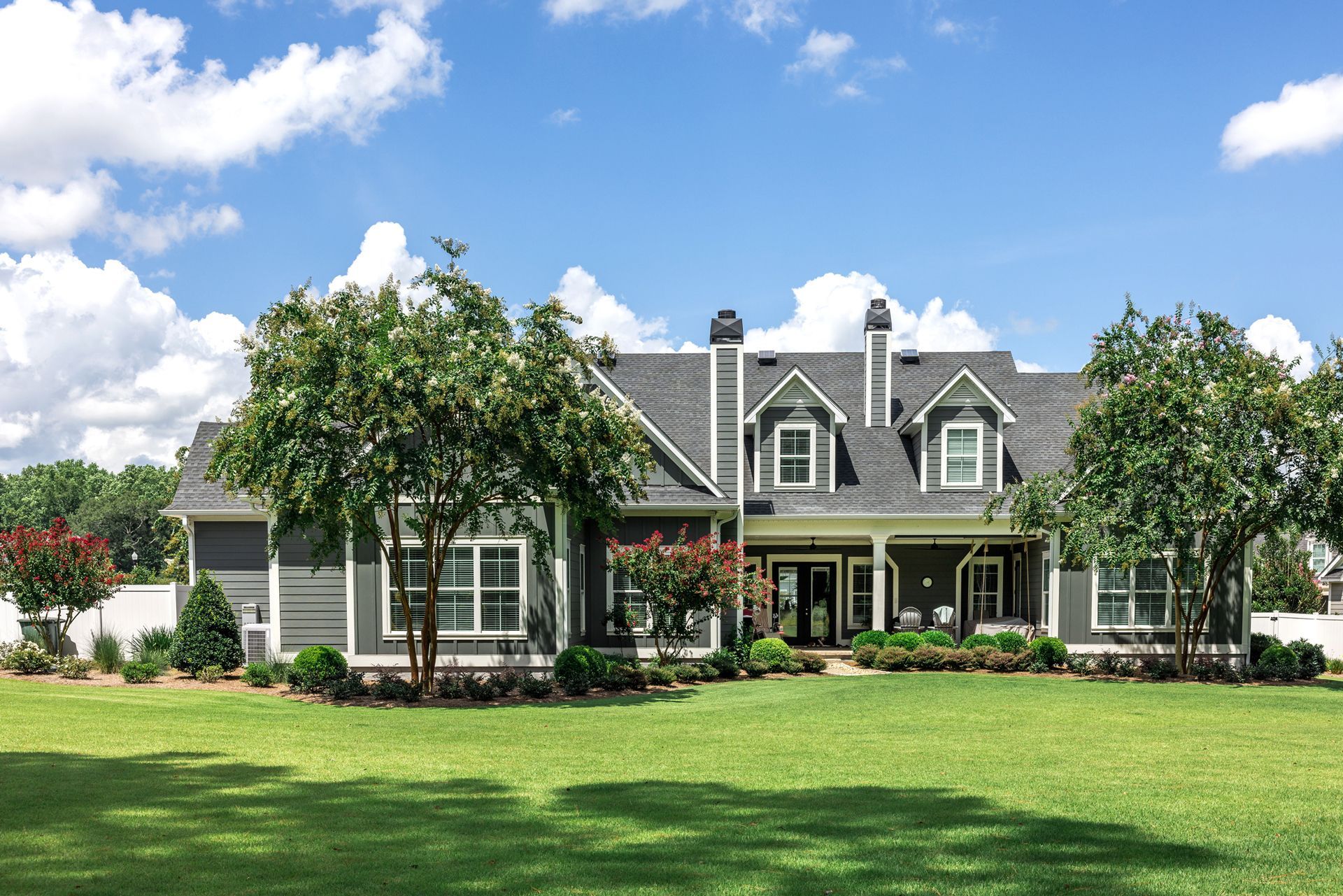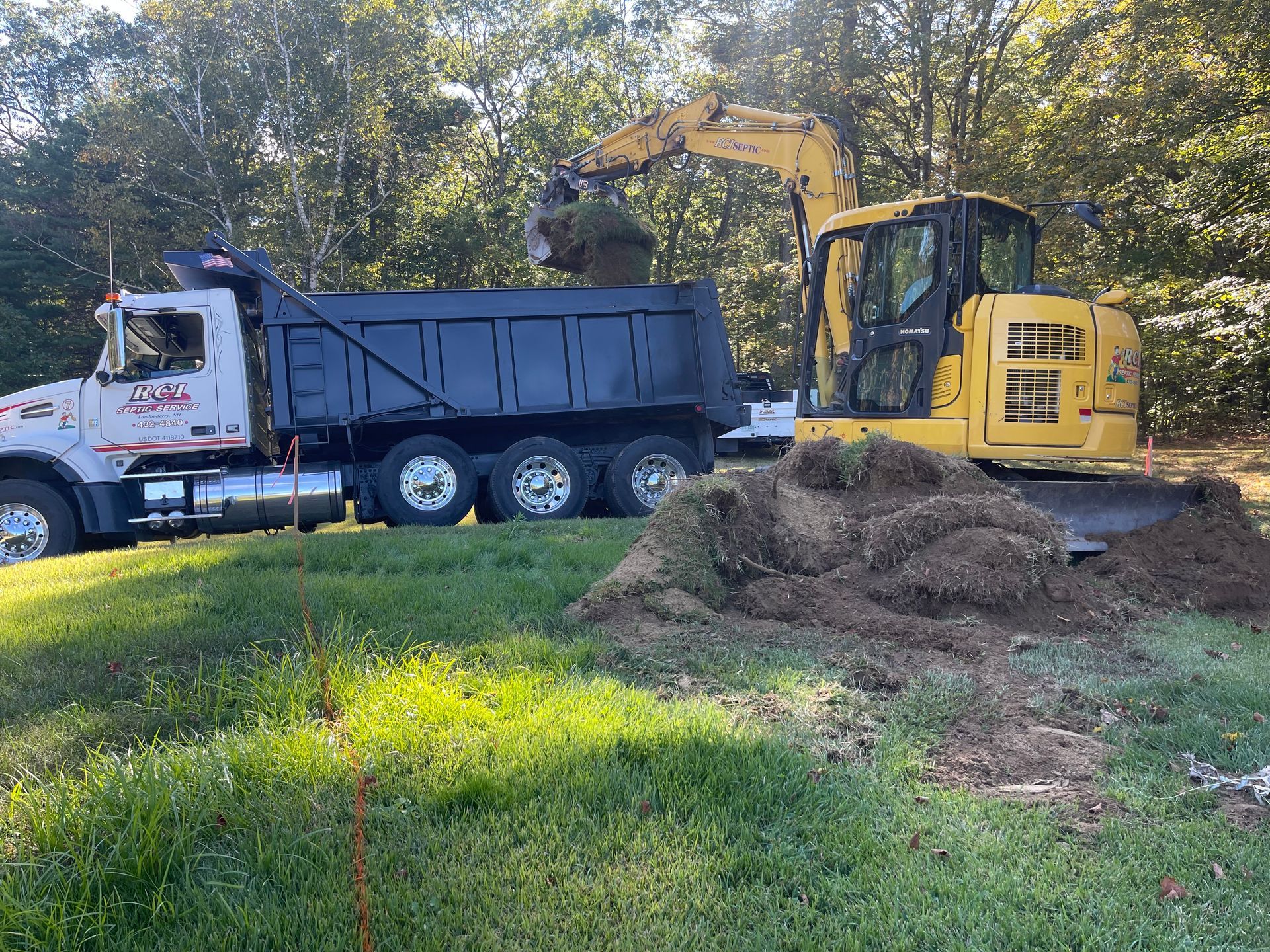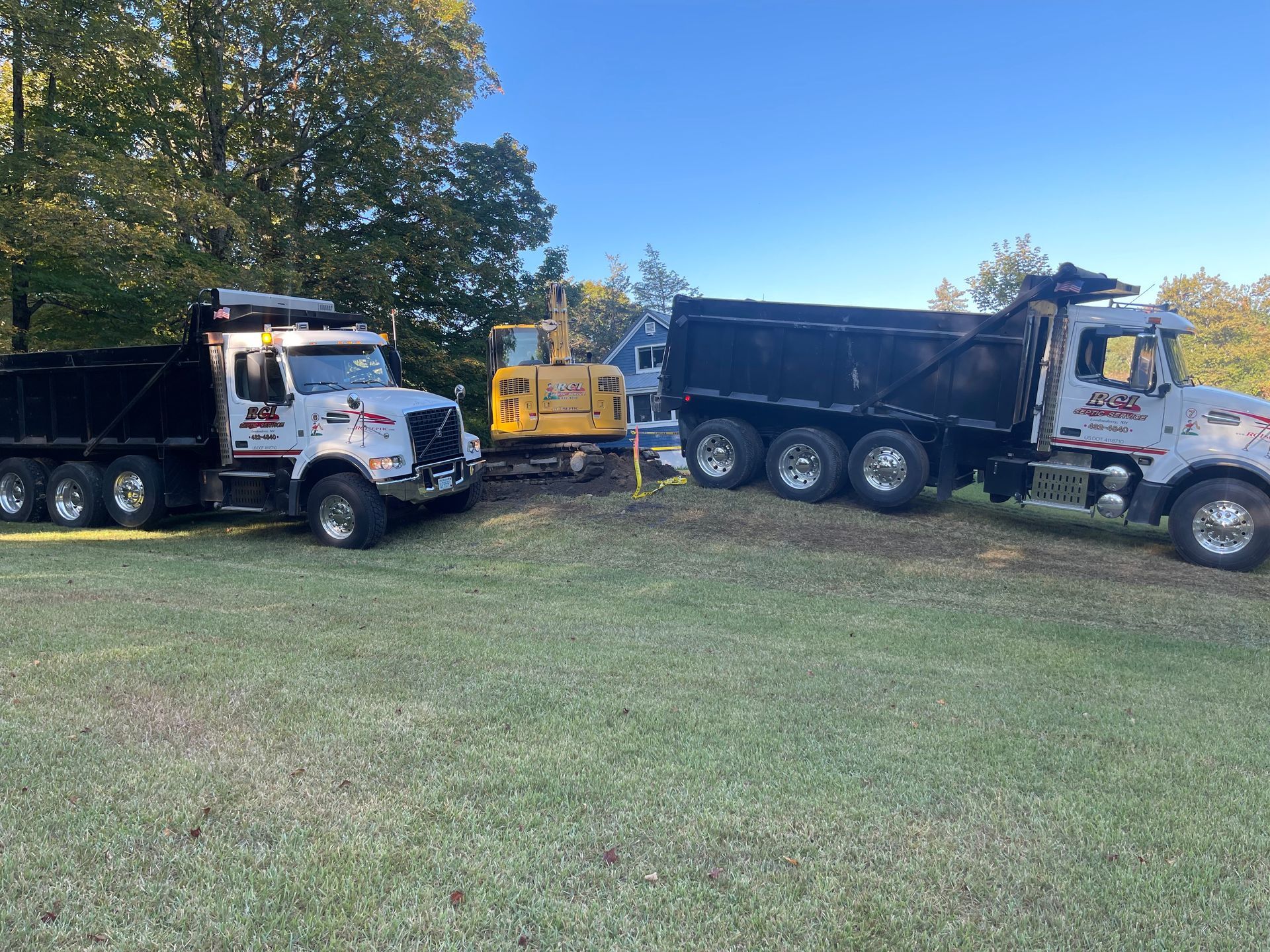Top Septic System Landscaping Ideas to Enhance Your Yard | Expert Guide by RCI Septic Service
Looking for septic system landscaping ideas that won’t damage your system? This guide provides practical tips to enhance your yard while keeping your septic system safe and functional.
Key Takeaways
- Choose shallow-rooted, low-maintenance plants like native grasses to enhance your yard without damaging your septic system.
- Avoid planting trees and large shrubs near your septic tank to prevent costly damage and ensure proper air circulation.
- Utilize decorative covers and proper drainage strategies to maintain aesthetics while protecting the integrity of your septic system.
Choose the Right Plants for Your Septic System
Choosing the right plants for your septic system is essential to prevent root invasion, which can damage the system and lead to costly repairs. Consider the following when selecting plants:
- Opt for shallow roots, low-maintenance plants that won’t interfere with your septic components.
- Choose native plants and ornamental grasses, as they are adapted to the local climate and soil.
- Select plants that require minimal maintenance while enhancing your yard’s visual appeal.
We’ll explore specific types of plants that are safe for septic systems, including native and ornamental grasses, other plants, and drought-tolerant plants, offering you a variety of beautiful and safe options.
Native and Ornamental Grasses
Native grasses like Little Bluestem and Douglas Spirea thrive in various conditions without damaging underground septic components, making them ideal for areas around your septic tank. They are adapted to the local climate, which means they require less water and maintenance, ultimately protecting your septic system while adding a natural charm to your yard.
Ornamental grasses, such as Berkeley Sedge, offer additional benefits. They add texture and movement to the landscape, control erosion, and improve drainage around septic areas. Functional and visually appealing, these grasses are perfect for enhancing your yard without compromising your septic system.
Drought-Tolerant Plants
Drought-tolerant plants like Tufted Hairgrass and Idaho Fescue are both beautiful and practical. Their fibrous roots stabilize the soil and reduce excess moisture, preventing water from pooling around your septic system. This is particularly beneficial in areas prone to dry spells, as it ensures the septic system remains functional without requiring additional water. Grass plays a role in this ecosystem by enhancing soil stability.
Choosing drought-resistant plants suited to the local climate, like those for Washington’s weather, enhances your landscaping while protecting your septic system. These plants require minimal maintenance, making them a low-effort, high-reward choice.
Avoid Planting Trees and Large Shrubs Near Your Septic Tank

Although trees and large shrubs can beautify a yard, they pose risks to your septic system’s health. To avoid these issues:
- Be aware that trees with aggressive root systems, like willows or cottonwoods, can invade and damage septic fields and plumbing, leading to costly repairs.
- Plant trees at least 20 feet away from the septic system.
- For water-seeking trees, plant them at least 50 feet away from the septic system. Additionally, when landscaping, consider where to plant shrubs to avoid interference with your septic system.
Ensuring proper spacing allows for adequate air circulation and root control, preventing damage from many factors. Avoiding large plants near your septic tank protects the system’s integrity while maintaining a lush landscape.
Alternative Plant Options and Mulch Use
To beautify your yard without risking septic system damage, consider wildflowers and ornamental grasses. These plants have less aggressive root systems, making them safe for areas around your septic tank. Wildflowers add color and attract pollinators, while ornamental grasses provide texture and movement. To ensure safety, it’s wise to avoid plants that may disrupt your septic system.
Using organic mulch like wood chips or shredded bark helps control erosion and keeps weeds at bay. However, avoid piling mulch directly on top of the septic tank to ensure proper soil airflow.
Create a Decorative Cover for Your Septic Tank Lid
Septic tank covers can be an eyesore in a beautiful yard. Creative solutions like faux rocks, large planters, or decorative mosaics, including a lawn ornament, can disguise these components. Faux rocks are lightweight and easy to move for convenient maintenance access. An ugly septic tank cover can also be used to enhance the aesthetic appeal of tanks.
Large or half-barrel planters can also serve as attractive covered options for your house. Choose designs that complement your landscaping and can be easily relocated when needed. These solutions hide the septic tank lid and enhance your yard’s aesthetics.
Implement Proper Drainage Around Your Septic System
Proper drainage protects your septic system from excess water. Redirecting stormwater prevents the drain field from becoming saturated and failing. Rain gardens and bog gardens are excellent for absorbing runoff and protecting your septic drain field, leach field, drain fields, irrigation, and drain lines.
These gardens use plants that tolerate wet and dry conditions, improving soil health and helping to reduce erosion. Ground covers that thrive in various conditions also help manage stormwater and maintain your septic system’s integrity.
Mark and Maintain Access Points
Maintaining accessible septic tank lids is crucial for regular maintenance. Use lightweight markers or decorative elements like potted plants or garden ornaments to indicate access points without obstructing them. These markers ensure easy access for service while blending into the landscape. Additionally, it’s important to consider the placement of septic tanks in your overall garden design.
Regular trimming and clear marking of access points are crucial for ongoing maintenance. Keeping these reserve area visible and unobstructed ensures that your septic system remains in good working order, which is essential for a thorough servicing pumping inspection.
Consider Future Growth in Your Landscaping Design

Planning for the future growth of your plants helps maintain a healthy septic system. Consider the following:
- Their mature size to avoid overcrowding and ensure continued access
- Proper spacing and long-term planning to prevent maintenance challenges
- Keeping your system running efficiently through thoughtful plant placement
Thinking ahead and choosing the right plants allows you to create a beautiful, functional landscape that stands the test of time. This foresight prevents issues and ensures that your septic system remains accessible and operational, as the right plants are carefully planted.
Use Non-Woody Ground Covers
Non-woody ground covers like Tall Fescue, creeping Charlie, wildflowers, and turf grasses are excellent for landscaping around your septic system. These shallow-rooted plants:
- Prevent erosion
- Protect the septic area
- Offer insulation
- Improve soil health
These ground covers enhance your yard’s appearance and provide practical benefits. Choosing non-woody landscaping options allows you to maintain a beautiful landscape while ensuring your septic system’s safety and functionality.
Ready to Beautify Your Septic Landscape Safely?
These landscaping tips help transform your yard into a beautiful space while protecting your septic system. Faux rocks, lightweight planters, and ornamental grasses are just a few options to hide septic tank covers and enhance your landscape’s visual appeal.
For professional advice and services, reach out to RCI Septic Service. Our team can help you implement these ideas and ensure your septic system remains in excellent condition. Visit our website or contact us for more information.
Summary
In summary, blending beautiful landscaping with a functional septic system is entirely possible with the right approach. By choosing the right plants, avoiding large trees and shrubs, using alternative plant options and mulch, and implementing proper drainage, you can protect your septic system while enhancing your yard’s aesthetics.
Remember to mark and maintain access points, plan for future growth, and use non-woody ground covers to ensure your septic system remains accessible and operational. With these tips, your yard can be both beautiful and functional, providing a safe and enjoyable space for years to come.
Frequently Asked Questions
Can I plant trees near my septic system?
Absolutely, it's wise to keep trees at least 20 feet away from your septic system to prevent root damage. For trees that seek more water, give them a little more space—around 50 feet is ideal.
What are some good plants to use around my septic system?
Using native and ornamental grasses, like Little Bluestem and Idaho Fescue, is a great way to keep your septic system safe while adding some charm to your yard. These plants are shallow-rooted and low-maintenance, ensuring they won’t interfere with your system.
How can I disguise my septic tank lid?
You can easily disguise your septic tank lid using faux rocks, large planters, or decorative mosaics that blend seamlessly with your landscaping. This not only conceals the lid but also adds a nice touch to your yard!
What is the importance of proper drainage around a septic system?
Proper drainage around a septic system is crucial because it prevents saturation of the drain field, avoiding potential system failure. Implementing features like rain gardens can help absorb excess runoff and protect your system.
Why is it important to mark and maintain access points for my septic system?
It's crucial to mark and maintain access points for your septic system to ensure easy access for regular maintenance and servicing. Using lightweight markers can help you locate the tank without blocking it.


